Introduction
The Automated Fingerprint Identification System (AFIS) is one successful expression of a scientific reality - that no human being is exactly the same as any other human being. Nature does not duplicate. Current science reveals that people (and in a broader sense, all organic entities) differ significantly in almost every way. The ability to reveal and use these differences depends on the discerning capacity of the technology.
First Notice
Scientists and observant students of nature have marveled at the nature and diversity of the skin patterns on their hands since prehistory. Attention was probably drawn to their fingers for several reasons. Humans have depended on the tool-using ability of the hands in all the primal functions of life, hunting, food gathering, defense and constructing tools and shelter. Also, hands are more easily viewed at close range than other parts of the body. This close scrutiny no doubt revealed the striking contrast between the type of skin found on the fingers and adjacent surfaces (Fig. 1).
Over the centuries people have explored the meaning and application of this phenomenon with increasing perception. Images of finger and palm prints adorn the cave walls of early humans. Finger impressions are common on ancient pottery, as artisans completed their craft with a fingerprint signature. In India, business and financial transactions were endorsed with the imprint of the person’s finger. In the nineteenth century M. Alphonse Bertillon believed strongly in the individuality of human beings. He attempted to quantify and exploit this phenomenon through a series of detailed and exacting body measurements. The full significance of fingerprint individuality, however, did not fully impact on the forensic world until approximately one hundred years ago.
The progression of fingerprint knowledge and consequently, fingerprint science can be seen in several distinct phases, not necessarily in the following order:
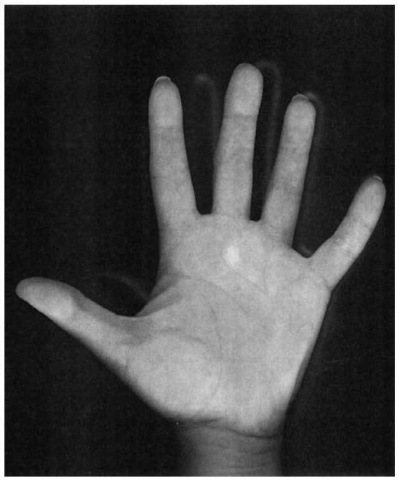
Figure 1 The strange skin on the inside of the hands and fingers.
• Observation and fascination
• Observation of diversity
• Comprehension of personal uniqueness
• Application as a signature on business transactions
• Awareness that the ridge detail does not change over time
• Pattern classification
• Application to criminal investigation – comparison and identification
• Ten print collection and search
• Single fingerprint collection and search
• Palm print collection and search
Ten Print Systems
The first fingerprint classification system was based on the recording of all ten digits. First, the pattern type of each digit was assigned. Secondary traits of each pattern were then recorded. Final overall classification of an individual’s fingerprints was dependent on the combination of the primary pattern type, secondary traits and the digit on which they appear.
It must be remembered that recordings of all ten digits were required for classification and addition of a person to the file base. It follows that all ten are required for a search of the file. For the first time in history it was possible to confirm the identity of an unknown person as an individual present in a police file, or positively eliminate him/her, solely on the recording of his/her fingerprints. His/her name (real or assumed), age and physical characteristics were not required for the search. This must be viewed as one of the most significant developments in the infant science of forensic identification.
That said, the value of a ten print system was obviously limited to ‘person to database’ searches, in which the searcher possessed recordings of all ten fingers. It offered no search option that could link a single fingerprint to either a person, or another single fingerprint.
The Henry system was based on Galton’s approach to filing and classification, and was subsequently adopted first by police in England and eventually by most English speaking police forces throughout the world over other systems also developed. It is worth noting, however, that Juan Vucetich of Argentina, also studied Galton’s system, as well as a paper authored by Henry de Varigny from the Revue Scien-tifique. In 1891, he initiated from these sources, a fingerprint system in Buenos Aires, three years before the Galton system was operational in England. This system claimed the first historic criminal fingerprint identification in 1892.
Single Fingerprint Systems
The best known of the manual single fingerprint solutions was the Battley System, which required the following:
• Recording of all digits (except little fingers) on a special, perforated form, which was stiffer than the conventional fingerprint form. The little fingers were omitted from the system because of their relatively rare appearance at crime scenes. This omission streamlined the collection and focused the power of the system on the digits most commonly recovered by evidence technicians;
• Classification of each fingerprint by pattern type and several secondary classifications;
• Separation of the form into the eight component cards, one for each digit. The person’s criminal record number was written on each digit card (Fig 2);
• Filing of each card in the appropriate section by digit, pattern type and secondary breakdowns;
• Classifying a candidate fingerprint for search by the same system used to create the database;
• When a search resulted in identification, the file number on the card directed the searcher to the complete record information of the individual identified.
Limitations
Computer enthusiasts will be well acquainted with the caveat: ‘garbage in, garbage out’. This axiom applies equally well in the area of manual fingerprint search. Users of ten-print systems enjoyed control over recording both the database sets and the set to be searched. This meant that a complete and clear ‘nail-to-nail’ recording of each finger was possible, assuming that rigid standards of fingerprint recording were maintained. Accordingly, if a match existed in the file, the chances were high that a search would find it. In a single fingerprint system, however, the impression for search was developed on an article from a crime scene, deposited unknowingly by a suspect. A clear, complete, ‘nail-to-nail’ impression is recovered rarely, if ever, from a crime scene or exhibit.
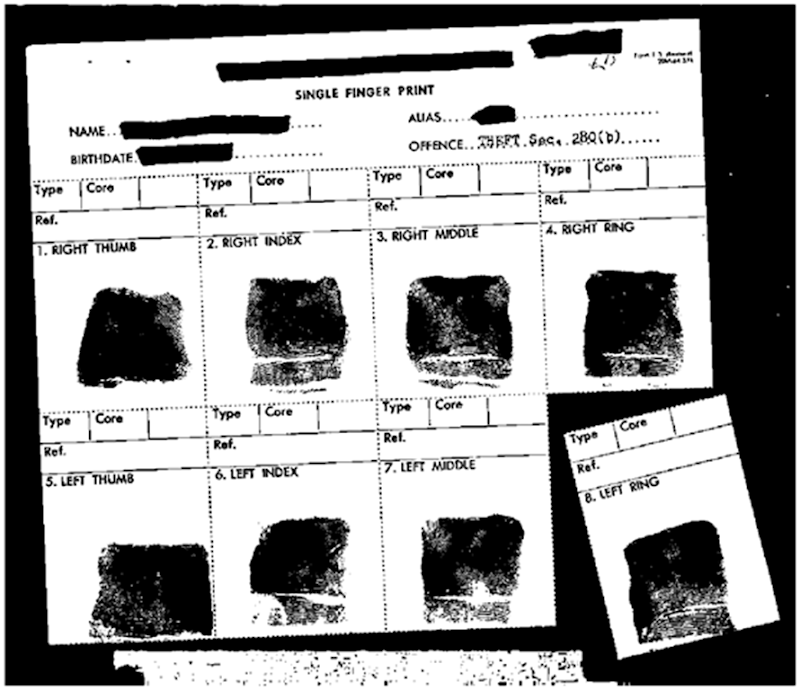
Figure 2 Perforated single fingerprint form.
Primary classification based on only the central portion of the print, the part most frequently encountered, was therefore essential. Secondary classification was only useful if the portion of the fingerprint, on which it was based, was present.
• If a critical part of the print were missing, even the apparent pattern type could be different (Fig. 3). It can be seen in Fig. 3 that all necessary components required for accurate classification can appear to be present when they are not. In these instances, the technician was required to search all the areas of the collection where the impression might reside. Partial searches, at least, had to be possible when portions of the suspect print were missing. This of course reduced the potential ability of the system to discriminate between different impressions and ultimately, to reveal positive matches.
• The value of any single fingerprint system depends on the elimination at the onset, of the vast majority of the impressions in the database. Unless the search parameters are narrow enough to provide this initial elimination, the number of possibilities requiring comparison will be too large and time-consuming to manage and maintain.
Inconsistency in recording the database impressions presented another problem. Even in controlled ink recording of fingerprints, pressure variations, finger movement and ink thickness routinely contributed to differences in appearance. If these differences resulted in a different classification (as they frequently did), different impressions of the same finger resided in different parts of the database, with an obvious negative effect on the search. It is significant that these problems occurred even within impressions taken under relatively controlled conditions and in the same recording medium – white paper and fingerprint ink. The conditions under which crime scene fingerprints are developed and recorded vary to a far greater extent. The recording medium may include powder, chemically altered sweat, blood or engine oil. The list of surfaces on which fingerprints appear is infinite, but typically includes paper, plastic, glass, metal, wood and skin.
Lastly, the human element must be considered. Even well-trained, experienced fingerprint analysts disagree on classification, when viewing difficult impressions that do not fall obviously into a single category.
All of these factors combined to limit the effectiveness of the manual system and the problem worsened as the database increased in size.
History of AFIS Technology
Computers presented a powerful solution to many of the challenges described above:
• Capability for storing and searching vast quantities of data very rapidly;
• Increased consistency in classification and search criteria;
• Elimination of the need for large volume storage of hard copy fingerprints.
The first AFIS system was conceptualized and developed in 1974 by Printrak, then a division of Rockwell International. The fledgling version of AFIS was adopted by the FBI, with the first ten print card readers installed in 1975. Since then, other large companies have become suppliers of AFIStechnology to countries around the world.
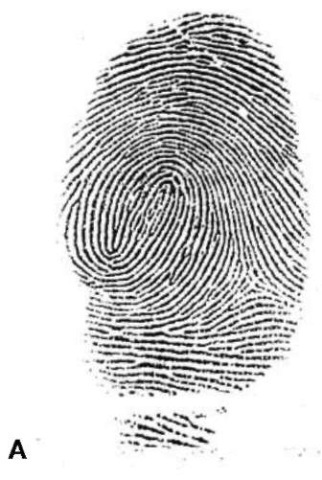
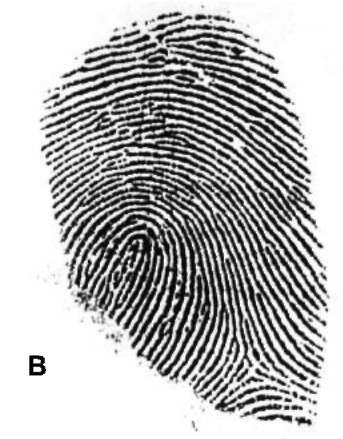
Figure 3 (A) Fingerprint clearly revealed as a twinned loop. (B) The same impression with a portion missing giving a different apparent pattern type.
Operations
All automated fingerprint systems complete a series of tasks:
• Receive and store ‘tombstone’ data of each entrant to the system. This includes name, date of birth and other record information;
• Enhance and sharpen ridge detail for maximum accuracy when prints are scanned;
• Automatically scan and classify all ten fingers of each entrant at high speed. (over 100 individuals per hour);
• Compare a suspect impression, classified in the same manner, to the database of known impressions;
• Ignore all the impressions that, on the basis of the data entered, could not be a match and generate a numerical score for each of the top possibilities, based on how closely they resemble the subject of the search;
• Display a match report in descending order, of the top possibilities that cannot be eliminated on the basis of the image data received, and the numerical score assigned to them. In the interests of efficiency, most systems are programmed to display only the top choices;
• One fact must be clearly understood. In spite of the name, all AFISsystems are elimination systems not identification systems. Computers do not, at present, identify fingerprints. The final function of the computer technology in this progression is the presentation of the top scoring possibilities. These possibilities may or may not include a match. The
AFISoperator, a highly qualified fingerprint technician, then conducts a comparison using the method in place for a century, and determines the success of the search.
AFIS Search Technology
The approach to classification in automated systems is fundamentally different from that pursued previously in manual single fingerprint collections. They depended on pattern classification, slope, ridge counting and the relationship between core and delta.
The software program used by the computer to perform fingerprint encoding is referred to as an algorithm. When a fingerprint is scanned into an AFIS system, the encoding software allows the computer to ‘see’ the actual ridge characteristics (bifurcations and ridge endings). The location, or address, of each characteristic is plotted on x-y axes, marked by a circle with a tail to indicate direction (Fig. 4). A map is created of the location and direction of all characteristics contained in the scanned impression (Fig. 5). The image of the fingerprint is therefore converted into numerical information that is easily stored in the computer memory.
Automated classification does not rely on the pattern designation, slope and core/delta designations that were so problematic in manual collections. It depends entirely on location and direction of minutiae, and their spatial relationship to each other. The advantage of this approach is immediately apparent. The impression in Fig. 3 is a double loop. If this impression appears at a crime scene, the descending loop may not be recorded. The primary classification of the latent would then apparently be a loop, and searching a Battley file would be unsuccessful.
An AFIS search is unaffected by unrecorded loops and deltas, so vital to the effectiveness of a manual system. Only the number, clarity and accuracy of the minutiae in the impression impact on success.
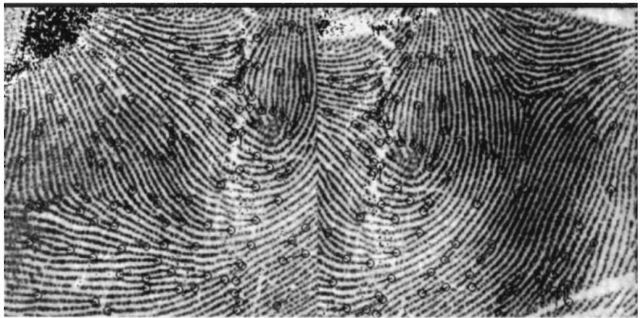
Figure 4 Palm print with the minutiae identified.
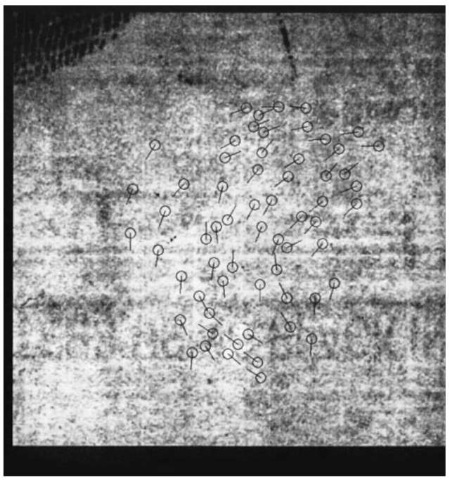
Figure 5 Minutiae map revealing location and alignment of minutiae.
Other realities, however, challenge the AFISsearch software and consequently, the AFISuser:
• Impressions not placed accurately in the designated space at time of inking arrest fingerprints;
• Uneven or excessive recording medium (e.g. ink);
• The end of the finger is a soft moveable pad. Pressure and twisting during recording can significantly distort the distances between minutiae;
• Permanent and temporary scars;
• All of the above also affect crime scene fingerprints.
As each new version of software becomes increasingly sophisticated and responsive, the impact of these obstacles is reduced. More hits are being made in larger databases in less time.
Search Possibilities
The power and speed of digitization also permit extended searches, some of which were not possible in manual systems.
• Latent to database: new latent fingerprints can be searched against the file to establish if that crime can be associated to any subject with a previous record.
• Latent to latent: new latent fingerprints can be searched against the file of existing latent impressions to detect connections between crimes.
• Re-searches: latent fingerprints associated to serious crimes can be re-searched on a regular basis to determine if the donor, heretofore unknown, has been added to the database in the interim.
• Regional searches: searches can be restricted to a specific region when indicated by investigative factors. This reduces pressure on the system operation and shortens the search time.
• Ten print searches: a known set of fingerprints is searched against the database to determine if the same person is present under another name.
Negative Searches
If an AFIS search is negative, however, can it be concluded that the person who made that fingerprint is not in the file, and does not have a criminal record? A negative search may be explained by several other possibilities, assuming that an experienced AFIS technician completed the initial encoding of the impression.
• Determination of the digit was wrong and therefore it was not searched correctly.
• Pressure and torque have altered the crime scene fingerprint so drastically as to eliminate the computer’s ability to locate a top-scoring match, if one exists in the file.
• The initial recording of the finger was deemed unsuitable for inclusion in the file.
• The finger has been scarred since its initial entry into the file. If this scar has altered the fingerprint sufficiently to lower the score, it will not come to the attention of the operator.
• There may be insufficient area common to both the file impression and the fingerprint being searched. This can result in a numeric score low enough to exclude the print from the top possibilities.
• The fingerprint was searched after the subject’s arrest, but before his fingerprints were included in the AFIS database.
Great care must be exercised to avoid unsupported conclusions.
Live scan
AFIS technicians have historically sought an improvement in ten-print quality. The majority of ten-prints are still recorded manually with ink. As with any manual process, the suitability of prints for digitizing and entry into an AFIS database is dependent on the skill and expertise of the person taking the impressions. Many police agencies are responsible for vast jurisdictions with multiple stations in which fingerprints are recorded. These stations are often far removed from the central location, and from each other. The submission of these inked ten-prints has relied historically on manual submission, usually by mail or courier, to the AFIS repository. Consequently, there is a delay between the time a subject is recognized and recorded as a criminal, and the time his/her fingerprints become part of the database.
Real time solutions have been developed by the industry in the form of live scan digital ten-print workstations (Fig. 6). These devices enable an operator to record fingerprints electronically that, in virtually every instance, are suitable for entry and search within the AFISdatabase. Livescan stations also check that each fingerprint scanned is suitable for inclusion in the database. The technician is instantly informed if any digits must be re-rolled. To further complete the real time component sought by AFIS specialists, these images are capable of electronic transmission directly to a central AFISrepository. Livescan technology practically eliminates the delay between recording of ten-prints and their addition to the database.
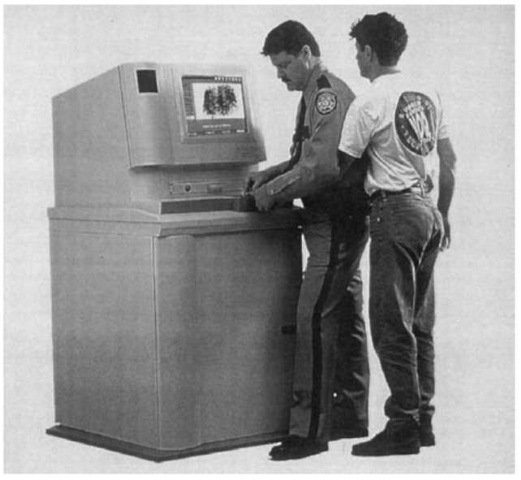
Figure 6 Live scan station for electronic recording of fingerprints.
Recognizing that the live scan solution would not be viable for lower volume users, the industry also developed software to allow enabled users to capitalize on simple scanning technology, to digitize and transmit ten print images suitable for import and search in the AFIS repository. Although this solution cannot eliminate the potential inaccuracy of ink recordings, it does facilitate more timely electronic submission to the AFIS database. It must be stressed here that human error in the inking of ten prints can only adversely affect the quality and technical integrity of the database. A poor quality image will not result in an improper identification but could easily result in a successful comparison being missed.
Palm prints
It has been noted that friction skin covers the inner surfaces of both palms and fingers, and is equally valuable for identification in either location. Indeed, palm prints represent approximately 30-35% of the impressions recovered from crime scenes (Fig. 7). Use of palm impressions, however, has traditionally been restricted to comparisons when suspects are known, and when their palm prints are on file.
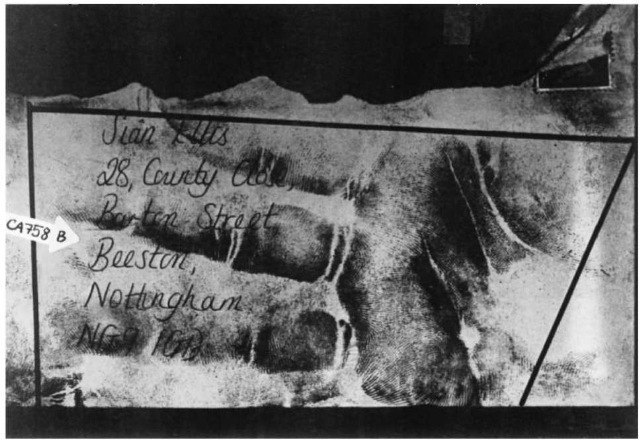
Figure 7 Latent palm print.
The taking of palm prints at time of arrest is not a universal practice among police agencies. In 1997, fingerprint experts from the Cambridgeshire Constabulary developed and implemented the first operational AFISpalm print system (Fig. 8). This approach has to surmount obstacles even more daunting than those encountered in AFISfingerprint systems:
• No existing universal protocol for recording of palm prints, similar to the recording of fingerprints, as an automatic consequence of a criminal charge;
• Greater potential for impressions taken poorly or incompletely, and for distortion;
• Much greater surface area than fingers with commensurate increase in the number of ridge characteristics;
• Complete palm prints are rarely found at crime scenes. It is frequently challenging for even experienced fingerprint technicians to determine from which part of the palm the impression originated;
• Correct orientation of crime scene palm prints is much more difficult than for fingerprints. Fingerprint technicians may hold different opinions as to the digit designation of a latent, but rarely will they disagree on the alignment of the impression, or the portion of the finger represented;
• Numerous flexion creases, characteristic of many palm prints, obstruct ridge detail and render it difficult or impossible for the computer to assess satisfactorily.
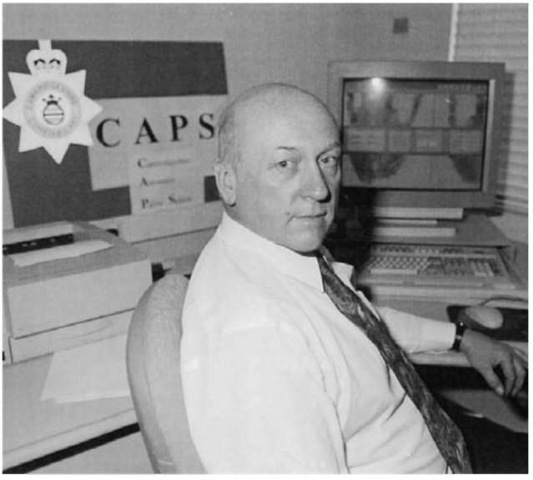
Figure 8 M. Lead better, developer of AFIS palm print system.
Administration and Networking
It is vital that record information (including fingerprints) be accessible to investigators at the earliest possible moment. Lawbreakers do not recognize the jurisdictional boundaries of police agencies, and may even exploit them. They have been known to travel hundreds of miles to commit crimes, in an effort to confound investigation. Recent high profile criminals have remained at large and even repeated their crimes, either because their criminal status in another jurisdiction was not known, or it was not known quickly enough in the same jurisdiction.
The final demand of forensic administrators for improved efficiency related to the submission of latent prints directly from the crime scene. Most forensic investigators were hampered by traditional manual lift procedures or at best, were forced to rely on secondary laboratory examination to capture a latent image suitable for transmission to the central AFIS repository for search purposes.
Industry leaders again responded to the demand and developed specialized software that would provide the link for field use. This software provided the bridge that enabled a forensic technician to capture a latent fingerprint using digital photography on location. Once downloaded into a computer hard drive, that image could be transmitted electronically for AFIS search. Forensic investigators can initiate the AFIS search process in real time directly from the crime scene.
Imagine the efficient use this technology offers:
• A technician attends a major crime scene in jurisdiction ‘A’ and isolates a latent fingerprint.
• This image is captured using digital photography and downloaded to a notebook computer.
• The file is transmitted using the regular or cellular telephone service to a centralized AFISrepository.
• Hours earlier in jurisdiction ‘B’, a police agency records for the first time the fingerprints of an accused using live scan technology. These digital ten prints are immediately submitted into the same centralized AFISrepository.
• The latent search is conducted and a suspect is positively identified and apprehended, early in the investigation before he can re-offend.
• Both processes happen in real time and have resulted in the forensic investigator providing the information necessary to solve a crime. The efficiencies and effectiveness of this electronic solution in support of forensic identification are significant.
The opportunity to solve crimes quickly allows forensic investigators to effectively manage a greater number of cases. All of these electronic processes required nothing greater to facilitate transmission than the existing network capabilities accessible to any business today.
In addition, early identification of an offender may eliminate the necessity for hours/days spent tracking leads that, in the absence of forensic evidence, may fail to solve the crime.
There are other benefits on the administrative balance sheet:
• Greater potential to recover property;
• Enhanced disruption of repetitive criminal activity;
• Faster linkages of criminal groups;
• Reduced crime while repeat offenders are in custody.
These components represent significant preventive cost savings and efficiencies to the administrator.
Conclusion
Cost effectiveness and efficient use of resources notwithstanding, one basic axiom should be remembered. Police forces are event-driven, not dollar-driven. The overriding objective of all police activity is the protection of society through timely and effective response. AFIS technology has assisted enormously, and will continue to do so, in the pursuit of that objective (Fig. 9).
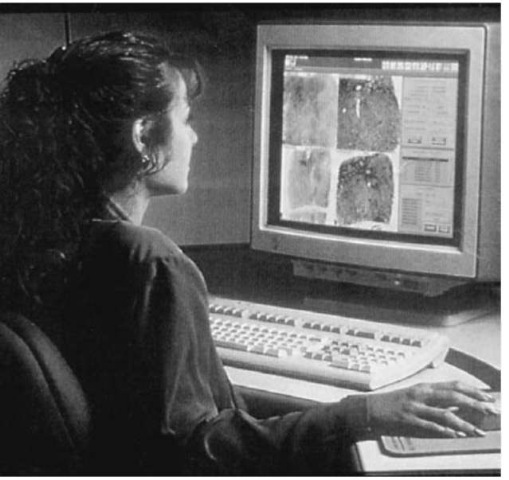
Figure 9 AFIS technician at workstation.
